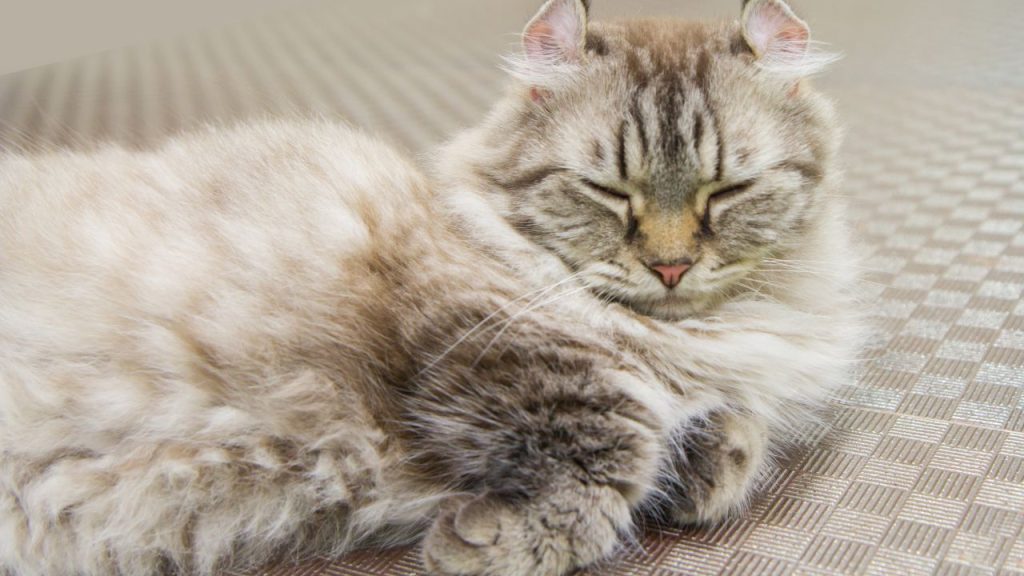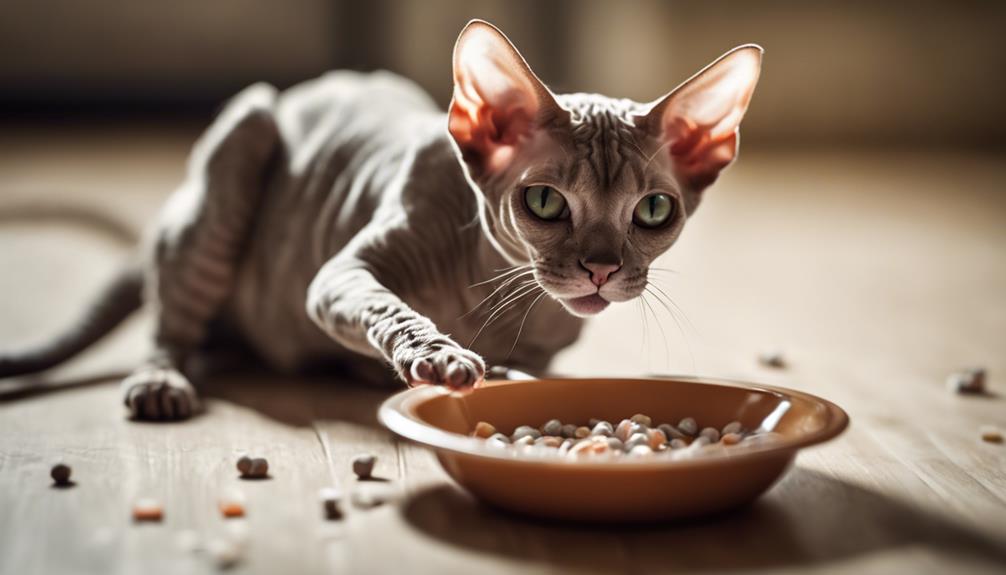Cats are fascinating creatures with unique characteristics that make them stand out from other animals. One such feature is their ears. Some cats have small ears, while others have large, pointed ears. If you’re a cat owner, you may have noticed that your cat’s ears are smaller than those of other cats. This may lead you to wonder why your cat has small ears and whether it’s something to be concerned about.
The size of a cat’s ears can vary depending on several factors, including genetics, breed, and age. Some breeds, such as Scottish Folds, are known for their small, folded ears. Other breeds, like the Siamese, have large, pointed ears. Cats can also have small ears due to genetics that affect the formation of their ears. However, it’s important to note that there will always be slight variations in ear size, even within the same breed, as every cat’s genetic profile is unique.
Understanding Cat Ears
Cats have a unique and fascinating anatomy, and their ears are no exception. Understanding the structure and function of cat ears can help you better care for your feline friend and recognize when something may be wrong.
The Anatomy of Cat Ears
Cat ears are made up of three main parts: the outer ear, middle ear, and inner ear. The outer ear, or pinna, is the visible part of the ear that sits on top of the head. It is made of cartilage and covered in fur. The pinna helps cats to hear by capturing and directing sound waves into the ear canal.
The middle ear consists of the eardrum and three small bones called ossicles. These bones amplify and transmit sound vibrations to the inner ear. The inner ear contains the cochlea, which is responsible for converting sound waves into electrical signals that the brain can interpret.
The Function of Cat Ears
Cats have excellent hearing, which is essential for hunting and survival. They can hear a wider range of frequencies than humans and can detect even the slightest sounds, such as the rustling of prey in the grass. Their ears are also incredibly mobile, with more than 30 muscles controlling their movement.
In addition to hearing, cat ears also play a role in communication and mood. The position and movement of a cat’s ears can indicate how they are feeling. For example, flattened ears may indicate fear or aggression, while forward-facing ears may indicate curiosity or excitement.
While small ears are not necessarily a cause for concern, it is important to monitor your cat’s ears for signs of infection, inflammation, or parasites. Ear infections are common in cats, especially those with allergies or weakened immune systems. Symptoms of an ear infection may include redness, swelling, discharge, and odor.
Regular ear cleanings can help prevent infections and keep your cat’s ears healthy. However, it is important to use caution when cleaning your cat’s ears, as inserting anything into the ear canal can cause damage or discomfort. If you suspect your cat may have an ear infection or other ear-related issue, consult with your veterinarian for proper diagnosis and treatment.
Common Ear Problems in Cats
Cats are prone to various ear problems that can cause discomfort and pain. It is important to recognize the signs of ear problems in cats to provide appropriate treatment. Some of the common ear problems in cats are ear infections, allergies, and skin conditions.
Ear Infections
Ear infections are one of the most common ear problems in cats. They can be caused by bacterial or yeast infections, and can occur in the outer, middle, or inner ear. Cats with folded ears, such as Scottish Fold cats, are more prone to ear infections because their ear canals are smaller and more prone to trapping moisture and debris.
Symptoms of ear infections in cats include redness, itching, and discharge from the ears. Cats may also shake their heads or scratch at their ears. Treatment for ear infections may include topical medications, ointments, or oral antibiotics. It is important to follow the veterinarian’s instructions for treatment and to monitor for recurrence.
Allergies
Allergies can also cause ear problems in cats. Cats can be allergic to various substances, including pollen, dust, and food. Allergies can cause inflammation in the ears, leading to itching, redness, and discharge.
Treatment for allergies may include avoidance of the allergen, topical medications, or oral antihistamines. In some cases, a hypoallergenic diet may be recommended to prevent future allergic reactions.
Skin Conditions
Skin conditions such as dermatitis and flea infestations can also cause ear problems in cats. Fleas can cause itching and inflammation in the ears, leading to scratching and the risk of infection. Dermatitis can cause redness and irritation in the ears.
Treatment for skin conditions may include topical medications, flea prevention, and addressing any underlying health conditions that may be contributing to the problem.
In conclusion, recognizing the signs of ear problems in cats and seeking appropriate treatment is important for their health and well-being. Ear infections, allergies, and skin conditions are common ear problems in cats that can cause discomfort and pain. Treatment may include topical medications, ointments, oral antibiotics, antihistamines, and flea prevention.

Diagnosing Small Ears in Cats
The size of a cat’s ears can vary greatly depending on various factors, including genetics, breed, and grooming habits. However, if you notice that your cat has unusually small ears, it could be a sign of an underlying health issue or genetic mutation. Here are some ways to diagnose small ears in cats:
Physical Exam
During a physical exam, a veterinarian will examine your cat’s ears for any abnormalities or signs of infection. They may also measure the size of the ears to determine if they are smaller than average. If necessary, they may perform additional tests to rule out any underlying health issues.
Genetic Mutation
Some cat breeds are known for having small ears due to genetic mutations. For example, Scottish Folds have small, folded ears due to a genetic mutation that affects the cartilage in their ears. If your cat is a purebred or mixed breed with a known history of a genetic mutation, it could be the cause of their small ears.
History and Breeds
Your cat’s history and breed can also provide clues about the cause of their small ears. For example, Siamese cats are known for having large, pointed ears, while white cats are more prone to ear infections and other ear-related health issues. By understanding your cat’s breed and history, you can better understand the potential causes of their small ears.
Behavioral and Grooming Factors
Behavioral and grooming factors can also play a role in the size of a cat’s ears. For example, cats that spend a lot of time grooming themselves may have smaller ears due to the constant grooming and pulling of the ear flaps. Additionally, cats that are vocal or active hunters may have smaller ears due to the increased risk of injury to the ears.
In conclusion, diagnosing small ears in cats requires a thorough physical exam, an understanding of the cat’s breed and history, and consideration of behavioral and grooming factors. By identifying the underlying cause of your cat’s small ears, you can better understand their health and provide appropriate care.
Treatment Options for Small Ears in Cats
Cats with small ears may experience discomfort or health problems, and it is important to seek veterinary care to determine the underlying cause. Treatment options for small ears in cats may include medications, surgery, grooming, and improving quality of life.
Medications
Medications may be prescribed to manage pain and inflammation associated with small ears in cats. Nonsteroidal anti-inflammatory drugs (NSAIDs) may be used to reduce pain and inflammation associated with arthritis or osteochondrodysplasia. Veterinarians may also prescribe antibiotics to treat infections that may be causing discomfort in the ears.
Surgery
Surgery may be necessary in some cases to correct small ears in cats. For example, Scottish Fold cats may develop ear problems due to the cartilage deformity in their ears. Surgery can correct the deformity and alleviate discomfort. Surgery may also be necessary to remove tumors or growths that are affecting the ears.
Grooming
Grooming can help improve the quality of life for cats with small ears. Regular grooming can help prevent infections and remove debris that may be causing discomfort. It is important to use gentle grooming techniques and avoid using cotton swabs or other objects that may cause damage to the ears.
Quality of Life
Improving the quality of life for cats with small ears may involve making changes to their environment. Cats with small ears may be more sensitive to loud noises, so it is important to create a quiet and calm environment for them. Providing soft bedding and comfortable resting areas can also help alleviate discomfort.
Overall, treatment options for small ears in cats will depend on the underlying cause of the problem. It is important to seek veterinary care and undergo a physical exam to determine the best course of treatment for your cat. Regular check-ups with a veterinarian can also help identify potential health problems before they become serious.
Conclusion
In conclusion, small ears in cats can occur due to several reasons. Some breeds like Scottish Folds and American Curls are known for their naturally small ears, while others may have small ears due to genetic mutations or developmental abnormalities. It is important to note that slight variations in ear size are normal and should not be a cause for concern.
It is crucial to keep in mind that cats’ ears are highly sensitive and delicate, and any attempt to clean them can cause more harm than good. Cats have a self-cleaning mechanism in their ear canals, and they do not require any help in keeping their ears clean. If you notice any signs of discomfort or irritation in your cat’s ears, it is best to consult a veterinarian for proper diagnosis and treatment.
Understanding your cat’s ear language can help you communicate better with them and strengthen your bond. It is essential to pay attention to their ear positions and movements, as they can indicate their mood and emotions. For instance, forward-facing ears indicate a neutral or happy mood, while flattened ears indicate fear or aggression.
In summary, small ears in cats can be a result of genetics, breed characteristics, or developmental abnormalities. It is crucial to avoid cleaning your cat’s ears and seek veterinary care if you notice any signs of discomfort or irritation. Understanding your cat’s ear language can help you communicate better with them and strengthen your bond.




